If you’ve ever flown to New England in September, you’ve heard it. Everyone’s talking about ‘The Foliage’. I first encountered the audibly-capitalized phrase after landing at Boston’s Logan Airport for a customer visit.
Autumn colors are a major tourist driver in the U.S. Northeast. But there are many other places you can go to see it if you live in the West – or even the Midwest.
California Dreamin’
In the San Francisco Bay Area, you’ll see autumn leaves everywhere. The trick is finding a good background. One tree at my local Saratoga post office gave me reliable leaf color every year, and I was able to position a leafy, out-of-focus background behind it. I can usually find a way to good backgrounds if I move around enough.
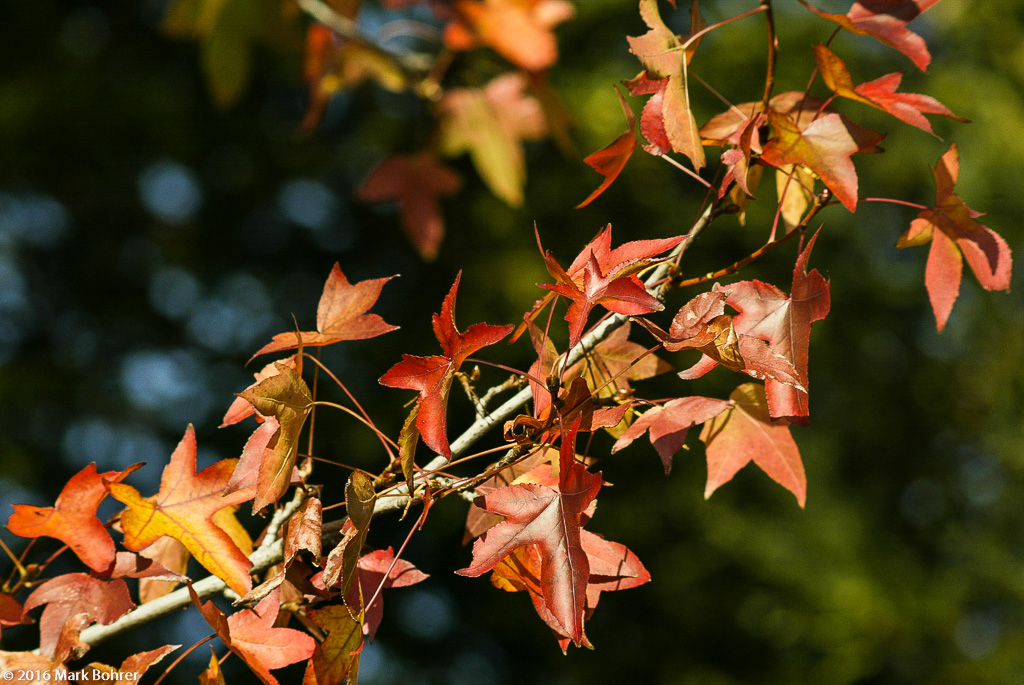
Autumn colors, Saratoga Post Office, California
|
Another choice is urban exclusion mode (works out of town too): crop tightly on the foliage. This works with interesting lines and curves, but usually lacks a sense of place. An arborist might know the difference, but this picture could be autumn leaves anywhere for most viewers.
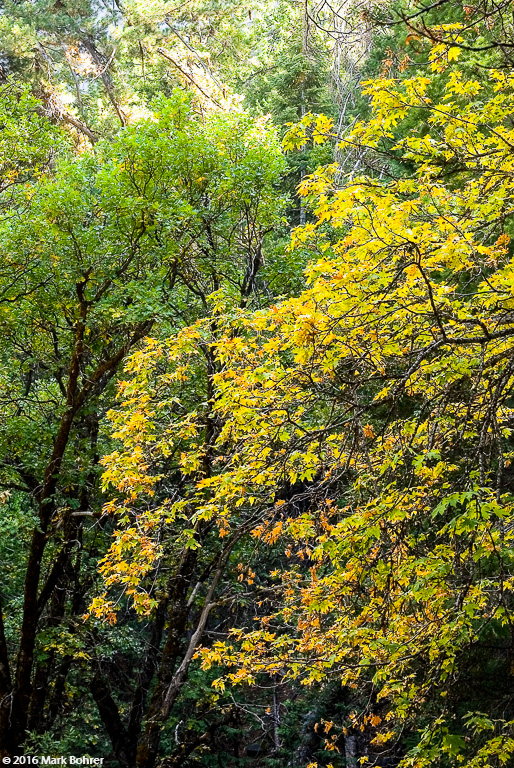
On the trail to Artist Point
A little further up the trail, I had an opening into a better background for sense of place.
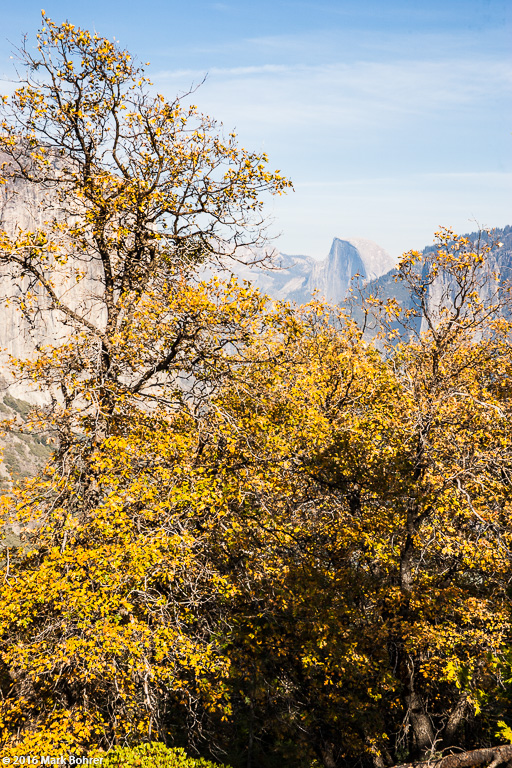
Clear view, trail to Artist Point, Yosemite National Park
Aspens in the West
The usual western fall color suspects are aspens. Whether you’re at Conway Summit along US 395 in the eastern Sierra Nevada, crossing the Rio Grande in Espanola, New Mexico, or heading south from Mesa Verde in Colorado, you’ll see their brilliant yellows and occasional oranges.
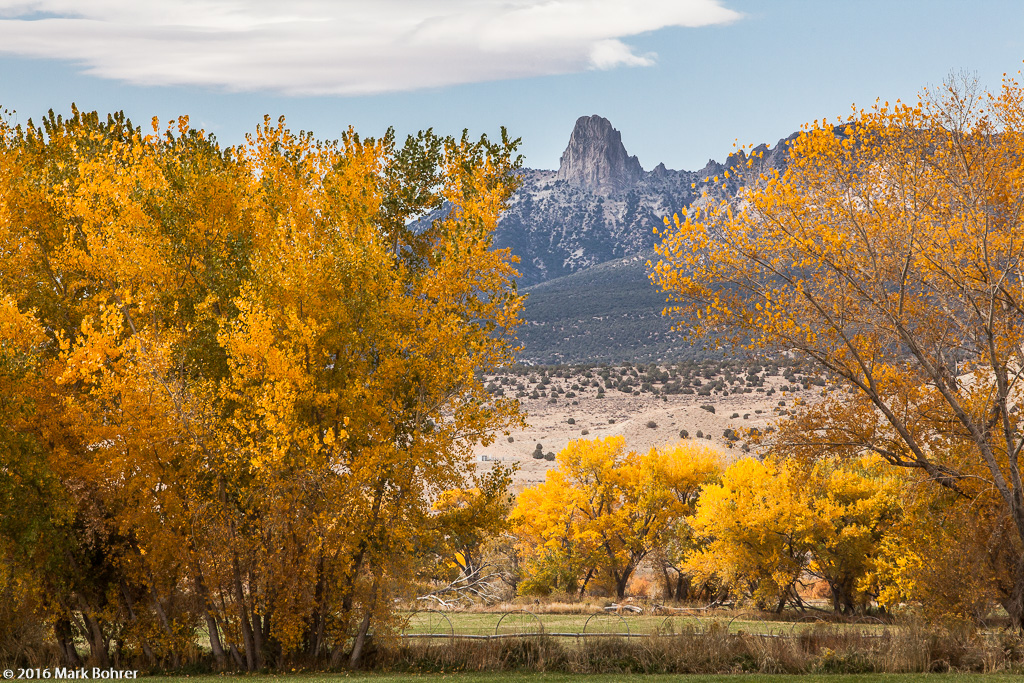
Fall color south of Cortez, Colorado
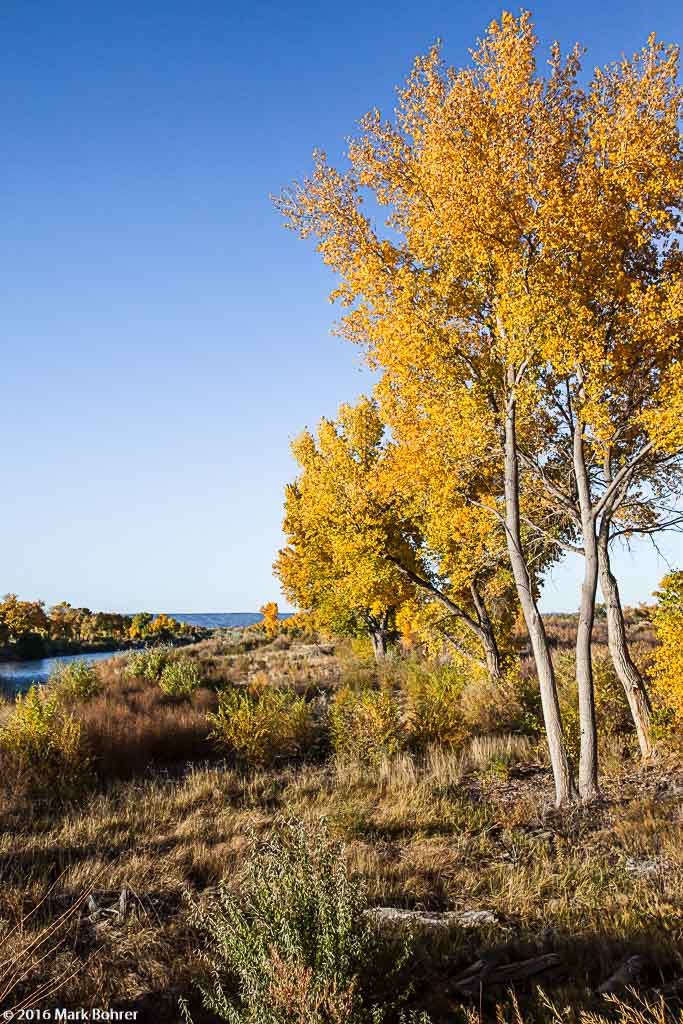
Yellow-Orange, Espanola, New Mexico
I’m usually drawn to splashy tree displays. But the low-hanging guys can do it too. Some of the best color happens at fence height. Just recognize and stay away from poison oak and poison ivy – they may display some of the best color.
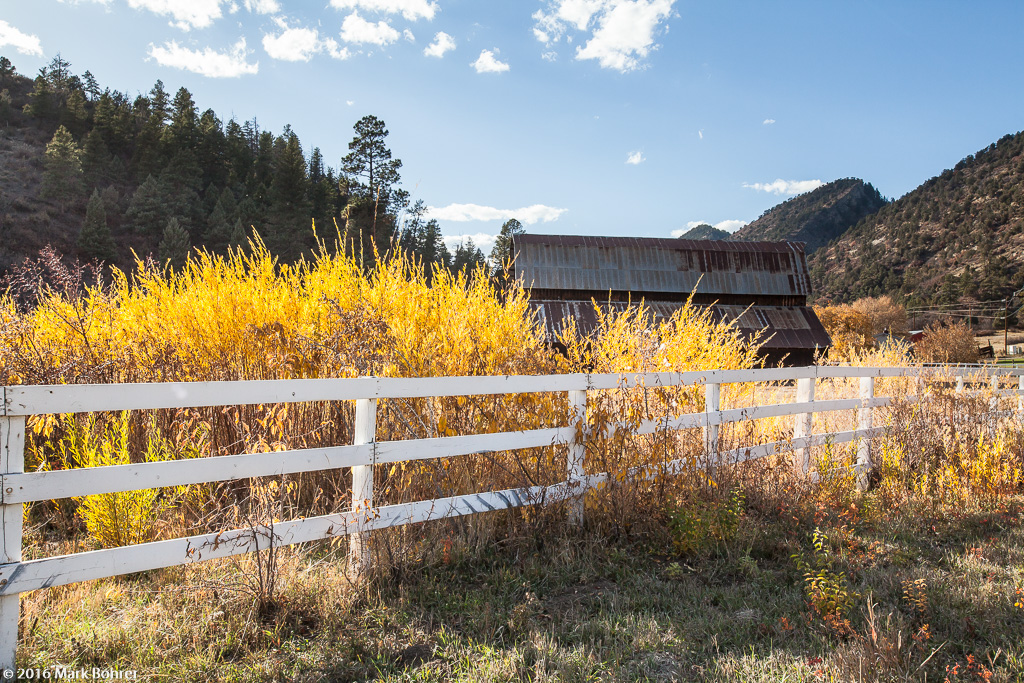
Barn and low-hanging color near Chimney Rock, Colorado
You’ll probably need to travel at least a little east for more colors. But look around, even in ordinary urban settings. Dense residential areas can have great colors. North suburban Chicago showed me these guys on a crisp October day. And non-native imports brighten up desert neighborhoods in New Mexico.
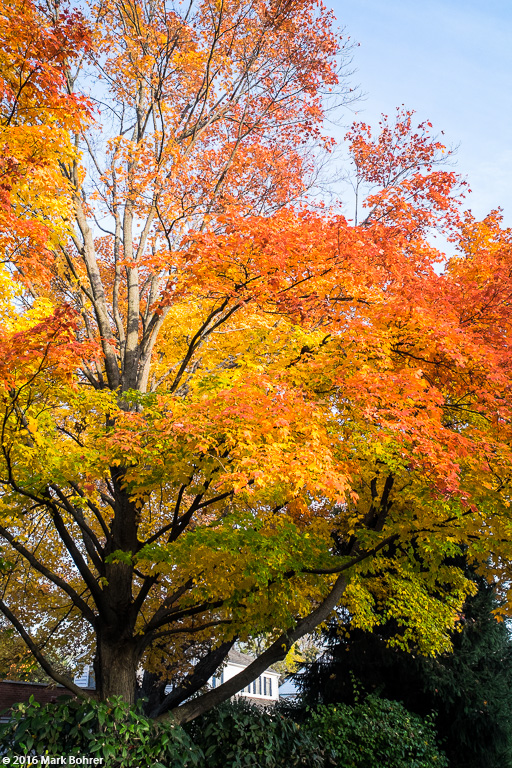
Fall color on Sheridan Road, Kenilworth, Illinois
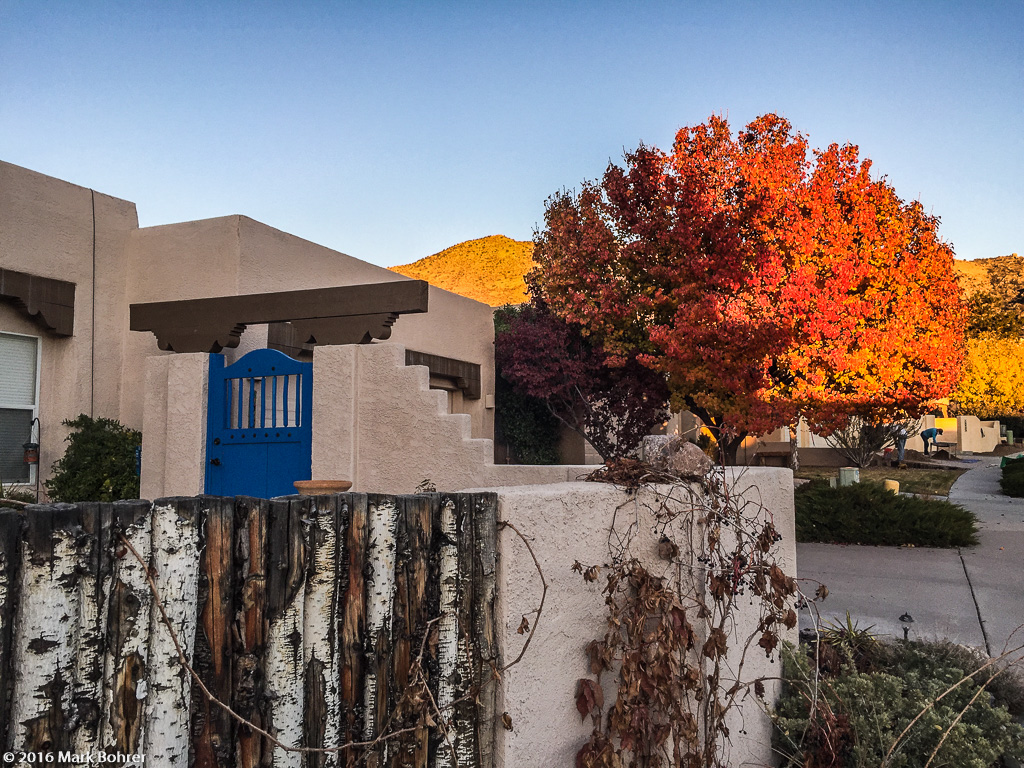
Non-native color, Albuquerque, New Mexico
More Than Color
Sure, the color riot catches your eye, but there’s more to a good story. That iconic wood rail fence leads a viewer’s eye below great autumn colors in stark rows. It gets even better with mules grazing there. Even late in the season, a few yellow leaves on bare branches hint at what’s coming. A single tree adds to the sense of isolation at a ruin in Canyon de Chelly. An approaching storm adds drama to a former orchard there.
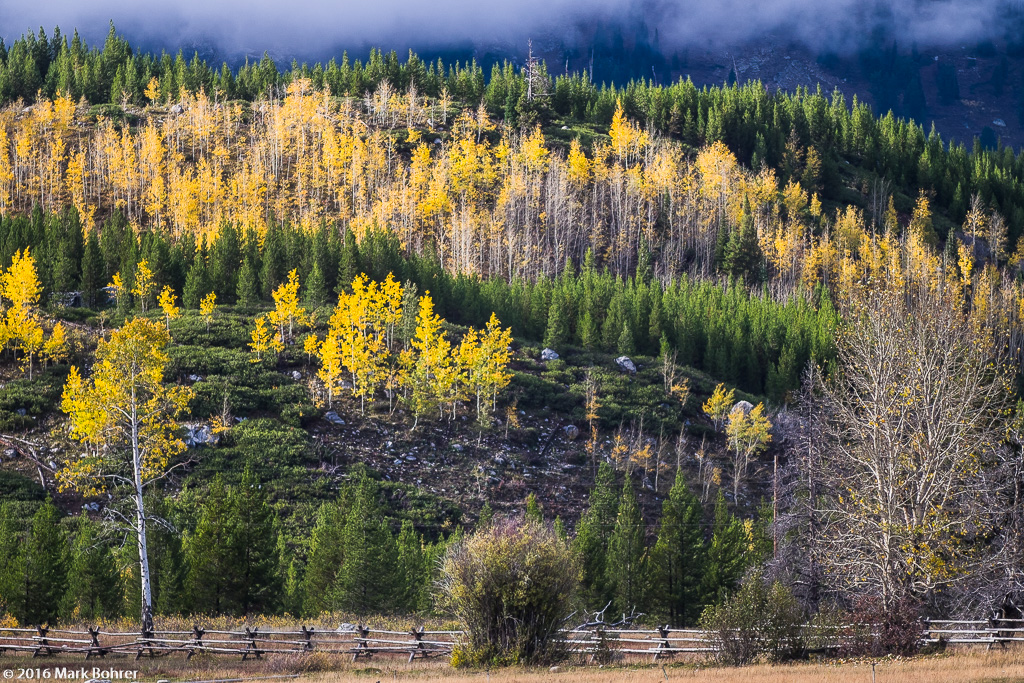
Wood rail fence and aspen rows, Jackson Hole, Wyoming
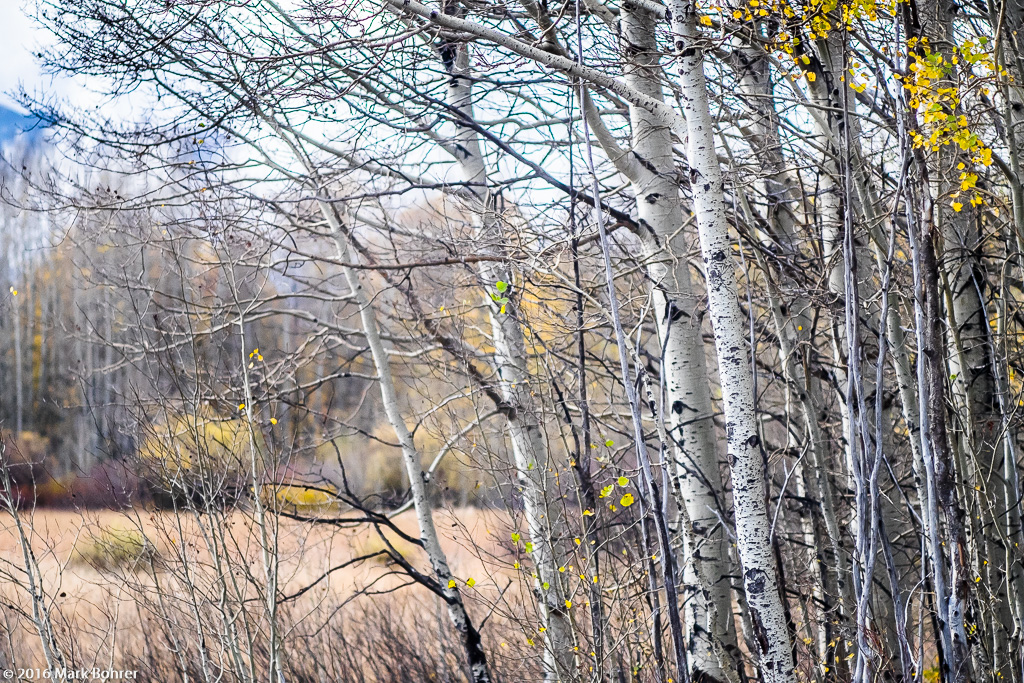
Approaching winter, Jackson Hole, Wyoming
It’s easy to become jaded about fall color when it happens every year. I try to avoid this by looking for new stories to tell about the turn of seasons. Keeping it fresh is the way to go.
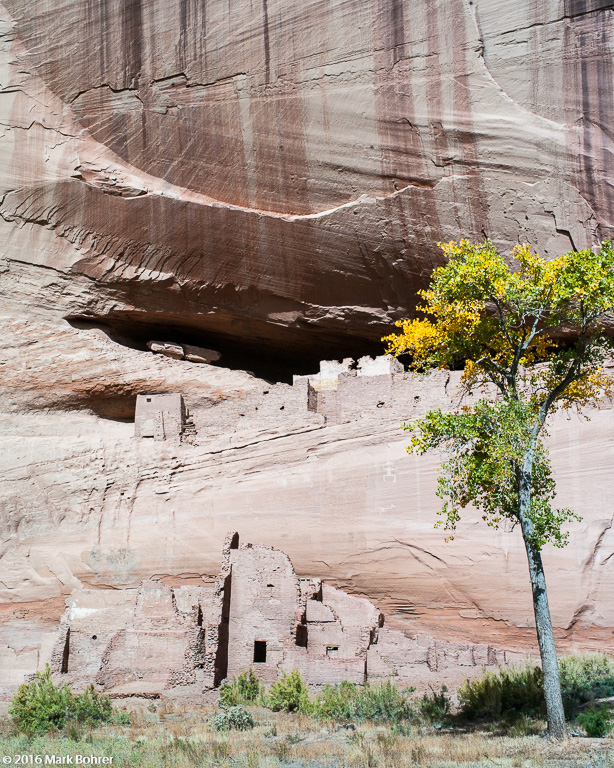
Lonely tree, White House Ruin, Canyon de Chelly, Arizona
Shot Notes
Skip The Polorizer
You may be tempted to screw in a circular polarizer for more saturated color. With any lens wider than 35mm full-frame, this is a great way to get unnaturally-dark corners – so I don’t do it.
Saturate In Lightroom – If You Really Need To
We have it pretty easy today – no need to use Kodachrome or Velvia for color saturation. I play with vibrance and saturation in Lightroom to mimic that intense film look.
But a little goes a long way. My settings tend towards 11-13 max for both. It can also be camera-dependent. Any dSLR or mirrorless camera from the last 8 years gives great colors in RAW files, just wating to be enhanced a little. The 64X increase in contrast range from RAW helps too.
Use A Recent Camera – And Avoid Cell Phones
Cameras more than 8 years old have white balance color problems. I struggled with an original EOS 1D (mk I) for years. Leica’s M8 digital camera was just slightly better, consistently yielding cold, blue color from auto white balance. I could never get the M8’s skies to look right.
So do yourself a favor – use a recent camera.
Cell phone cameras lack the large pixel count and pixel size you’ll need for sweeping fall landscapes. They’ll render individual leaves as colored mush. They’ll also give you JPEG images with detailless blown highlights.
So please do yourself another favor – use a real camera with a large sensor. Most mirrorless cameras are lightweight with good-sized sensors, and can give great results.
|


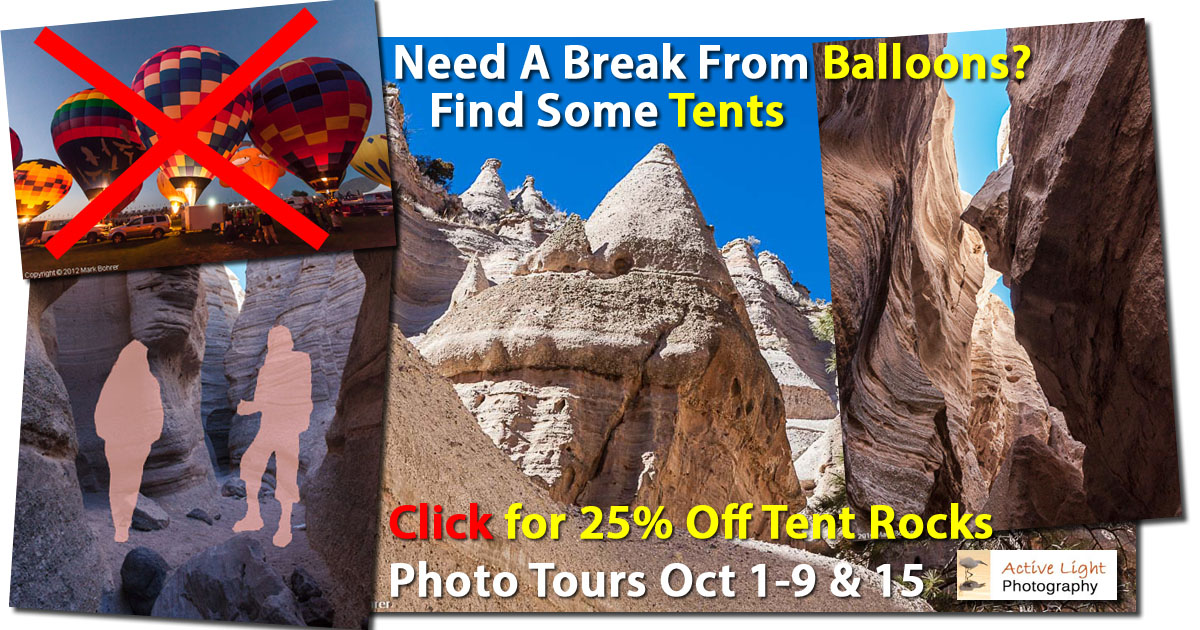










Recent Comments